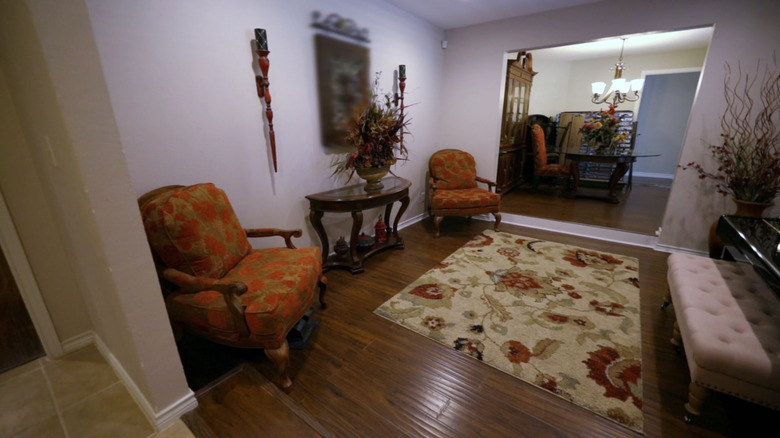Why Renovation Impossible Says To Avoid This Living Room Style
We may receive a commission on purchases made from links.
Making big life changes can be scary — and this is especially true when renovating your home. Which new materials should you incorporate? Do you want to create an open floor plan or make a certain room bigger? Not only are you making changes to the design aesthetic, but, in the process, you're also increasing the home's overall value. Eventually, the goal is to lure in buyers when it's time to sell. Still, renovations are pricey. In fact, just redesigning your living room costs roughly between $6,700 and $7,800, according to Insider.
If you're gathering ideas for your next living room makeover, there are definitely some dos and don'ts to be aware of — and Russell Holmes, host of "Renovation Impossible," has revealed a major don't. According to HGTV, Holmes serves as a contractor on the show and assists his clients in completing paused renovations while staying on budget. Based on his expertise, we believe you can avoid a major renovation mistake with his guidance.
An accident waiting to happen
According to Realtor, Holmes isn't a fan of sunken living rooms and believes they only decrease a home's value. "If you don't pay attention, you're going to fall down and bust an ankle," Holmes pointed out. "Because that wood floor is the same color on the step as it is on the floor below." Although this was a popular trend through the 1950s and 1960s, a step that is typically 6 to 8 inches deep can be dangerous for the elderly and small children, per RosieOnTheHouse.
In the end, this sunken living room — pictured above and featured in Season 1, Episode 6 of "Renovation Impossible" — was transformed into a leveled dining room (via Amazon Prime). Holmes and his crew raised the floor by first pouring on a layer of cement. Then, they laid down several wooden boards on their sides to make the flooring level with the rest of the home. "This way, when we put down the new flooring, it'll all be even," Holmes explained. After raising the flooring and removing the wall separating the room from other areas, the residence instantly felt more open and brighter.

